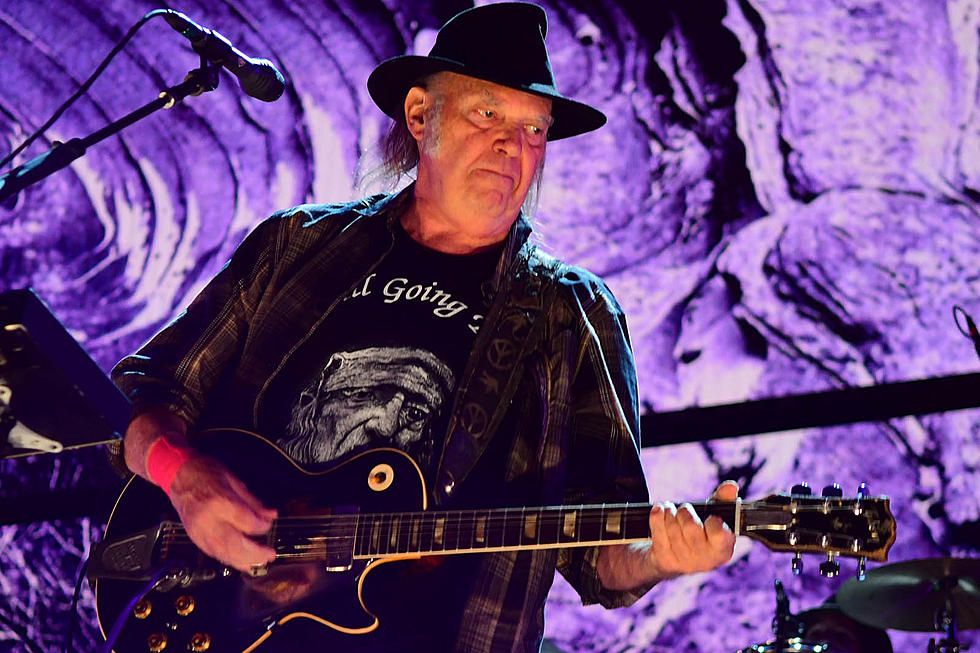
When Neil Young Cleared the Vault for the Rootsy ‘Silver and Gold’
As the 20th century gave way to the 21st, Neil Young showed little sign of slowing the breakneck pace he’d set for himself all the way back when he was kicking around with Rick James in the Mynah Birds in the early '60s.
Silver & Gold arrived on April 25, 2000 as his 28th studio record, not counting work with Buffalo Springfield or Crosby, Stills, Nash & Young. Once again, he returned to the country-rock roots that first made him a solo star.
Young had spent the past four years keeping himself extremely busy working on a variety of projects with a couple of his many different outfits. He recorded a new record with Crazy Horse in 1996 titled Broken Arrow and embarked on a massive tour that resulted in the double-live record Year of the Horse, as well as the Jim Jarmusch-directed documentary of the same name. Shortly thereafter, he re-entered the studio with David Crosby, Stephen Stills and Graham Nash for the album Looking Forward, then hit the road once again. By 2000, he finally felt ready to re-enter the studio for a solo effort.
Rather than try and write a whole new array of material for what would become Silver & Gold, Young instead leaned heavily on material he’d kept stored up throughout the years. The title track and “Razor Love” were originally written and performed live going all the way back to the early '80s, while most of the rest of the songs had been penned intermittently throughout the '90s.
Young enlisted a number of crack session musicians to help him record Silver & Gold, including Booker T. & the M.G.’s late bassist Donald “Duck” Dunn and Ben Keith, who’d been working with Young since Harvest in 1971. Keith also served alongside Young as the record’s producer.
Listen to Neil Young's 'Good to See You'
He also put in a call to a duo of the greatest female vocalists of all-time to back him up for the song "Red Sun": “I remember I was by myself when I did it and, by the end, I was crying. It was very emotional,” Young later recalled. “I kept hearing Emmylou Harris' voice on it and I finally ended up taking it to Tucson to Linda Ronstadt's house, where she and Emmylou were working on an album with Dolly Parton. They ended up singing on a lot of the songs on this album, but this one really got to me. The song's got a little bit of religion in it and Emmylou's voice, especially, is suited to that."
Longtime fans of Young found themselves especially enamored with the track “Buffalo Springfield Again,” where the singer recounts the end of his earlier band and expresses a desire to play with them all once again. Young missed his chance three years before this song debuted when Buffalo Springfield was inducted into the Rock & Roll Hall of Fame in 1997, but he made up for it in 2011 when he hit the road for a series of six performances with them. A larger tour was supposedly in the works, but failed to materialize.
One of the more intriguing facts about Silver & Gold is the cover, a sepia-toned, heavily pixelated shot of Young standing with his hands on his hips. It’s notable for being perhaps one of the few, if not the only, album covers to be shot using a Nintendo Gameboy camera. The photographer, it turns out, was Young’s own daughter Amber.
Months before the record reached store shelves, Young once again hit the road, this time for a solo acoustic tour. A full performance of this show was filmed by director L.A. Johnson at the Bass Concert Hall in Austin, Texas, and was later issued on DVD as Silver & Gold as well. The original album later nabbed a Juno nomination in Young's home country of Canada for the award for the Roots and Traditional Album of the Year.
Neil Young Albums Ranked
More From Ultimate Classic Rock









